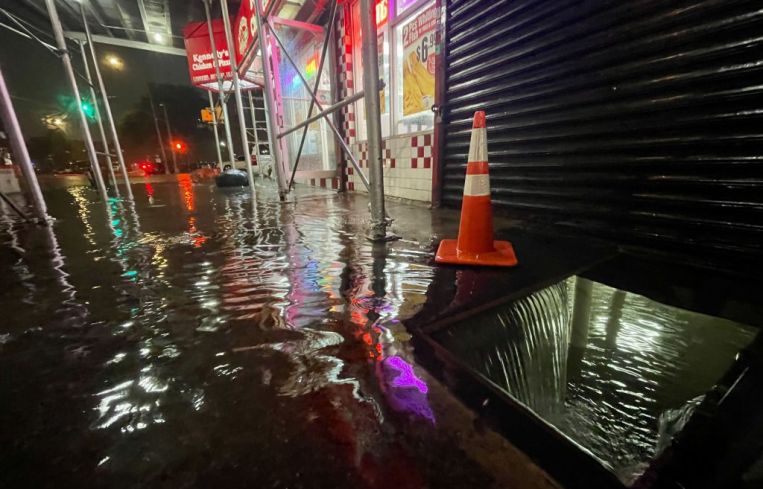Commercial Properties at Risk of $13.5B in Flood Damage in 2022
Economic fallout from closures and lost businesses could reach $50 billion next year
By Chava Gourarie December 22, 2021 4:42 pm
reprints
Commercial properties are facing up to $13.5 billion in damages from flood risks in 2022, and the economic fallout could be four times that, according to a new report by commercial engineering firm Arup and the nonprofit First Street Foundation.
That number is expected to continue to increase as the risk of flooding — from both pluvial (rainfall) and fluvial (overflow) sources — increases due to climate change. The structural damage alone could cost up to $17 billion annually by 2052, an increase of 25 percent from estimates for 2022.
The report also quantifies the wider economic impacts of flood risk to commercial properties, from downtime, closures, lost retail traffic, and inability to do business from certain areas. The estimated impact could reach $50 billion in 2022, rising to over $60 billion annually in 2052.
Understanding the risk to commercial properties, as well as its impact on broader economic activity, could help local governments decide where to focus their mitigation and adaptation efforts, as well as help property owners prepare, per the report.
In fact, many property owners have already experienced such damage, according to a report from Cervest, a climate intelligence platform for commercial properties. Close to 90 percent of respondents said at least one of their assets had been damaged by extreme weather events over the preceding five years, while 61 percent said their assets were at risk of flood damage, the report indicates.
Miami and New York City rank first and second for the most properties at risk, respectively, and the most potential damage, according to the First Street report. However, as a proportion of total properties, the Miami metro ranks far above New York City, with 53 percent of its commercial properties at risk of structural damage because of flooding, amounting to more than 25,000 properties and a total potential cost of $1 billion. The asset-type breakdown is 4,750 office buildings, 13,240 retail properties and 7,980 multifamily buildings with at least four units.
It’s not only coastal cities that are facing such damage, however. Pittsburgh ranks next for the highest amount at stake, with 36 percent of its buildings vulnerable to flooding. Other cities in the top 20 metros are Los Angeles, Washington, D.C., Boston, Houston and Tampa, Fla.
The study comes as the United States is reassessing its exposure to flood risk, with the National Flood Insurance Program (NFIP) recently undergoing an overhaul to its risk-rating system. The new risk model includes pluvial flooding for the first time, and assesses vulnerability and costs at the asset level.
The system is designed to distribute the cost of flood risk more fairly, with more valuable properties paying more because of their replacement costs, and more resilient properties paying less than they would have under the old model.
When the overhauled flood insurance program rolls out in April 2022, 77 percent of single-family and commercial policyholders will see their rates rise, though only 3 percent of commercial policies will see increases of more than $20 per month, according to federal data.
That said, most commercial properties that are required to have flood insurance use the NFIP only as the first line of defense because the max payout is $500,000. If damages could exceed that, the property owner will likely take out a second policy to cover any additional amount.
Chava Gourarie can be reached at cgourarie@commercialobserver.com.



